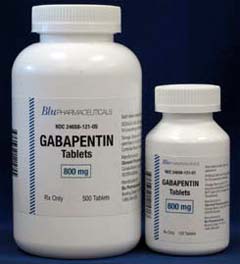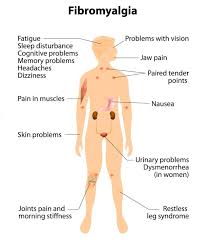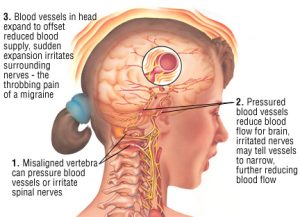Drowsiness, dizziness, loss of coordination, tiredness, blurred/double vision, unusualeye movements, or shaking (tremor) may occur. If any of these effects persist or worsen, tell your doctor or pharmacist promptly.

Remember that your doctor has prescribed this medication because he or she has judged that the benefit to you is greater than the risk of side effects. Many people using this medication do not have serious side effects.
Tell your doctor right away if any of these unlikely but serious side effects occur: swelling of the hands/ankles/feet, signs of infection (such as fever, cough, persistentsore throat).
A small number of people who take anticonvulsants for any condition (such as seizures, bipolar disorder, pain) may experience depression, suicidalthoughts/attempts, or other mental/mood problems. Tell your doctor right away if you or your family/caregiver notice any unusual/sudden changes in your mood, thoughts, or behavior including signs of depression, suicidal thoughts/attempts, thoughts about harming yourself.
Get medical help right away if you have any serious side effects, including: unusual fever, swollen glands, yellowing skin/eyes, unusual tiredness, dark urine, signs ofkidney problems (such as change in the amount of urine), chest pain.

A very serious allergic reaction to this drug is rare. However, get medical help right away if you notice any symptoms of a serious allergic reaction, including: rash,itching/swelling (especially of the face/tongue/throat), severe dizziness, trouble breathing.
This is not a complete list of possible side effects. If you notice other effects not listed above, contact your doctor or pharmacist.
In the US –
Call your doctor for medical advice about side effects. You may report side effects to FDA at 1-800-FDA-1088 or at www.fda.gov/medwatch.
In Canada – Call your doctor for medical advice about side effects. You may report side effects to Health Canada at 1-866-234-2345.
Side Effects
Drug information provided by: IBM Micromedex
Along with its needed effects, a medicine may cause some unwanted effects. Although not all of these side effects may occur, if they do occur they may need medical attention.
Check with your doctor immediately if any of the following side effects occur:
More common
- Clumsiness or unsteadiness
- continuous, uncontrolled, back-and-forth, or rolling eye movements
More common in children
- Aggressive behavior or other behavior problems
- anxiety
- concentration problems and change in school performance
- crying
- depression
- false sense of well-being
- hyperactivity or increase in body movements
- rapidly changing moods
- reacting too quickly, too emotional, or overreacting
- restlessness
- suspiciousness or distrust
Less common
- Black, tarry stools
- chest pain
- chills
- cough
- depression, irritability, or other mood or mental changes
- fever
- loss of memory
- pain or swelling in the arms or legs
- painful or difficult urination
- sore throat
- sores, ulcers, or white spots on the lips or in the mouth
- swollen glands
- unusual bleeding or bruising
- unusual tiredness or weakness
Incidence not known
- Abdominal or stomach pain
- blistering, peeling, or loosening of the skin
- clay-colored stools
- coma
- confusion
- convulsions
- dark urine
- decreased urine output
- diarrhea
- difficult or troubled breathing
- dizziness
- fast or irregular heartbeat
- headache
- increased thirst
- irregular, fast or slow, or shallow breathing
- itching or skin rash
- joint pain
- large, hive-like swelling on the face, eyelids, lips, tongue, throat, hands, legs, feet, or sex organs
- loss of appetite
- muscle ache or pain
- nausea
- pale or blue lips, fingernails, or skin
- red skin lesions, often with a purple center
- red, irritated eyes
- unpleasant breath odor
- vomiting of blood
- yellow eyes or skin
Some side effects may occur that usually do not need medical attention. These side effects may go away during treatment as your body adjusts to the medicine. Also, your health care professional may be able to tell you about ways to prevent or reduce some of these side effects. Check with your health care professional if any of the following side effects continue or are bothersome or if you have any questions about them:
More common
- Blurred vision
- cold or flu-like symptoms
- delusions
- dementia
- hoarseness
- lack or loss of strength
- lower back or side pain
- swelling of the hands, feet, or lower legs
- trembling or shaking
Less common or rare
- Accidental injury
- appetite increased
- back pain
- bloated or full feeling
- body aches or pain
- burning, dry, or itching eyes
- change in vision
- change in walking and balance
- clumsiness or unsteadiness
- congestion
- constipation
- cough producing mucus
- decrease in sexual desire or ability
- dryness of the mouth or throat
- earache
- excess air or gas in the stomach or intestines
- excessive tearing
- eye discharge
- feeling faint, dizzy, or lightheadedness
- feeling of warmth or heat
- flushed, dry skin
- flushing or redness of the skin, especially on the face and neck
- frequent urination
- fruit-like breath odor
- impaired vision
- incoordination
- increased hunger
- increased sensitivity to pain
- increased sensitivity to touch
- increased thirst
- indigestion
- noise in the ears
- pain, redness, rash, swelling, or bleeding where the skin is rubbed off
- passing gas
- redness or swelling in the ear
- redness, pain, swelling of the eye, eyelid, or inner lining of the eyelid
- runny nose
- sneezing
- sweating
- tender, swollen glands in the neck
- tightness in the chest
- tingling in the hands and feet
- trouble sleeping
- trouble swallowing
- trouble thinking
- twitching
- unexplained weight loss
- voice changes
- vomiting
- weakness or loss of strength
- weight gain
Other side effects not listed may also occur in some patients. If you notice any other effects, check with your healthcare professional.
Call your doctor for medical advice about side effects. You may report side effects to the FDA at 1-800-FDA-1088.


 Some people with migraine have very frequent headaches, sometimes every day. This form of migraine, called chronic migraine, is difficult to treat. The newest treatment is Botox (onabotulinumtoxinA). The doctor gives multiple injections around the head and neck once every 12 weeks. It is approved for people that experience migraine headaches more than 14 days per month.
Some people with migraine have very frequent headaches, sometimes every day. This form of migraine, called chronic migraine, is difficult to treat. The newest treatment is Botox (onabotulinumtoxinA). The doctor gives multiple injections around the head and neck once every 12 weeks. It is approved for people that experience migraine headaches more than 14 days per month.